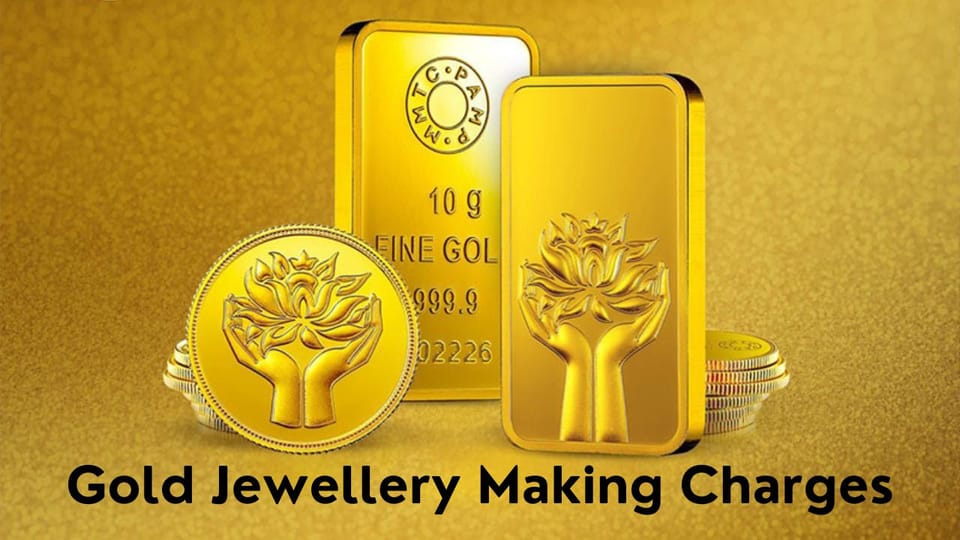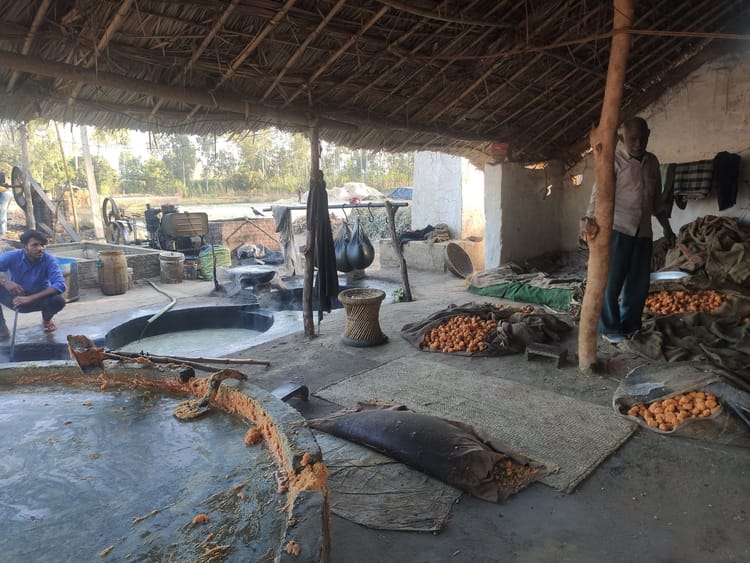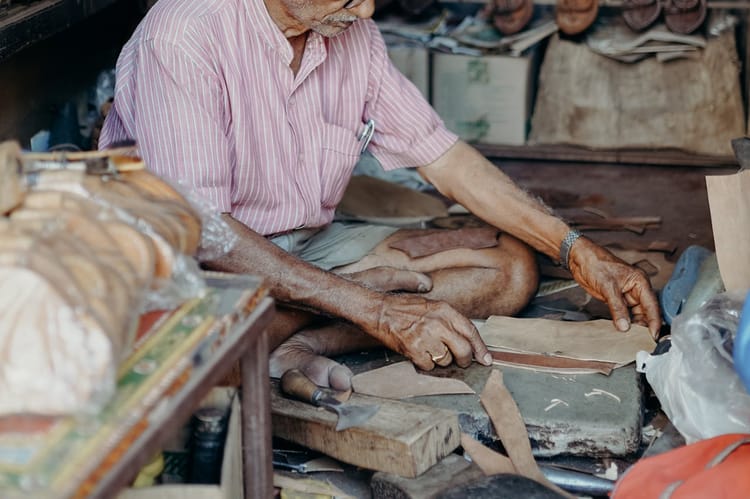How to Calculate Gold-Making Charges?

How to Calculate Making Charges on Gold?
- Gold has always been regarded as a symbol of wealth, status, and power. In India, it holds not just financial value but also immense cultural and sentimental significance. The purchase of gold spikes during festivals and special occasions, makes it a popular investment option. One of the crucial factors that contribute to the total cost of gold jewelry is the making charges. Understanding these charges and how they are calculated is essential for anyone planning to buy gold jewelry, whether for personal use, gifts, or investment purposes.
Understanding Gold-Making Charges in India:
- Making charges on gold refers to the costs associated with transforming raw gold into jewelry. These charges cover the expenses related to designing, conceptualizing, and crafting the jewelry pieces. It is important to note that gold prices in India are not uniform across the country. They can differ from one shop to another, between different jewelers, and from city to city. This variation is primarily due to the differences in making charges.
- Generally, a city's gold prices are set by a local association that updates the rates daily. While the cost of gold may vary slightly due to factors such as taxes and purity, making charges remain a significant factor that can substantially impact the final price of the jewelry.
Formula to Calculate the Final Price of Gold Jewelry:
The final price of gold jewelry can be calculated using the following formula:
- Final Price = (Price of Gold per Gram x Weight in Grams) + Making Charges + GST on Price of Jewelry and Making Charges
Factors Influencing Gold-Making Charges:
Several factors determine the making charges on gold jewelry. Understanding these factors can help you make a more informed decision when purchasing gold.
Quality and Purity of Gold:
- The quality and purity of the raw gold used to create jewelry significantly affect the making charges. Higher purity gold, such as 22K or 24K, is softer and requires more intricate craftsmanship, which can increase the making charges. The purity of gold can be verified by checking for the Bureau of Indian Standards (BIS) hallmark, which ensures the gold's authenticity.
Craftsmanship and Design Complexity:
- The complexity of the jewelry design is a major factor influencing making charges. Intricate and detailed designs require more time, effort, and skill, leading to higher charges. For example, wedding jewelry, which often features elaborate designs, typically has higher making charges per gram compared to simpler, plain gold jewelry. Similarly, jewelry pieces studded with diamonds or other gemstones may have higher making charges due to the additional craftsmanship involved.
Transportation and Handling Costs:
- The process of making gold jewelry involves various stages, including storing, packing, moving, and transporting the gold. These logistical costs are factored into the making charges. Delays in transportation or additional handling requirements can also contribute to higher charges.
How to Calculate Making Charges for Gold:
- Understanding how to calculate making charges is essential for evaluating the true cost of gold jewelry. There are two common methods used to calculate these charges:
Fixed Rate Per Gram:
- In this method, the making charges are calculated based on a fixed rate per gram of gold. The weight of the gold jewelry you purchase is multiplied by the fixed rate to determine the making charges.
Example:
If you buy 10 grams of gold and the jeweler charges a fixed rate of Rs. 500 per gram as the making charge, the total making charge would be:
Making Charge = 10 % × Rs. 500= Rs. 5000.
Percentage of the Total Value:
- In this method, the making charges are calculated as a percentage of the total value of the gold. The percentage varies depending on the jeweler and the complexity of the design. This method often results in higher making charges for expensive jewelry pieces.
Example:
If you purchase gold worth Rs. 7,00,000 and the jeweler charges 10% as making charges, the total making charge would be:
Making Charge = 10% × Rs. 7,00,000 = Rs. 70,000.
GST on Gold Making Charges:
- In India, a Goods and Services Tax (GST) of 5% is levied on gold-making charges. This tax is shared between the central and state governments. The 5% GST applies not only to the making charges but also to any labor or craftsmanship involved in repairing jewelry.
Making Charges vs. Wastage Charges:
- In traditional gold jewelry making, some amount of gold is lost during the process of cutting, shaping, and melting. This loss is referred to as wastage. To compensate for the wastage of gold, jewelers often charge a wastage fee in addition to making charges. However, with the advancement of technology and the use of modern methods, the wastage of gold has been reduced significantly.
- It is important to distinguish between making charges and wastage charges. While making charges cover the cost of producing the jewelry from raw gold, wastage charges account for the loss of gold during the manufacturing process.
Conclusion:
- When purchasing gold jewelry, it is essential to be aware of the making charges and how they are calculated. This knowledge will empower you to make informed decisions and negotiate better prices. A fixed rate for making charges may be more advantageous when gold prices are rising, while a percentage-based calculation might be preferable during periods of declining prices.
- Understanding the different factors that influence making charges, such as the quality of gold, craftsmanship, and transportation costs, can help you assess the true value of the jewelry you are buying. Additionally, being aware of the GST and wastage charges ensures that you are fully informed about the total cost of your purchase.
Frequently Asked Questions:
What is Making charges of 1 gram Gold?
- Making charges refer to the cost of transforming raw gold into jewelry, typically measured in rupees per gram. These charges usually range from ₹25 to ₹35 per gram, which is minimal compared to the current price of gold.
What is the standard rate for gold-making charges in India?
- Making charges for gold in India vary widely depending on the region, the jeweler, and the design of the jewelry. There is no standard rate, and it can range from a fixed amount per gram to a percentage of the gold's value.
Do gold coins also have making charges?
- Yes, gold coins are subject to making charges. The charges depend on the purity of the gold and the intricacy of the design of the coin.
What is the making charge for 1 gram of gold?
- There is no fixed making charge for 1 gram of gold. The rate varies from one jeweler to another and depends on the design and craftsmanship involved.
Which type of jewelry typically has the lowest making charges?
- Machine-made jewelry, such as simple bangles and chains, usually has the lowest making charges. These items are less complex in design and require less manual craftsmanship, resulting in lower charges.
What is the wastage charge for gold in India?
- Wastage charges are not standardized and can vary from one jeweler to another. The charge compensates for the loss of gold during the jewelry-making process and is typically higher for more intricate designs.
How are making charges on gold calculated?
- Making charges can be calculated using either a fixed rate per gram of gold or a percentage of the total value of the gold. The method used depends on the jeweler's pricing policy.
Is GST applicable to gold-making charges?
- Yes, a GST of 5% applies to gold-making charges in India. This tax is charged on the labor and craftsmanship involved in producing the jewelry.
We hope that you like this content and for more such content Please follow us on our social site and YouTube and subscribe to our website.
Manage your business cash flows and payable/receivables using our Bahi Khata App




Comments ()